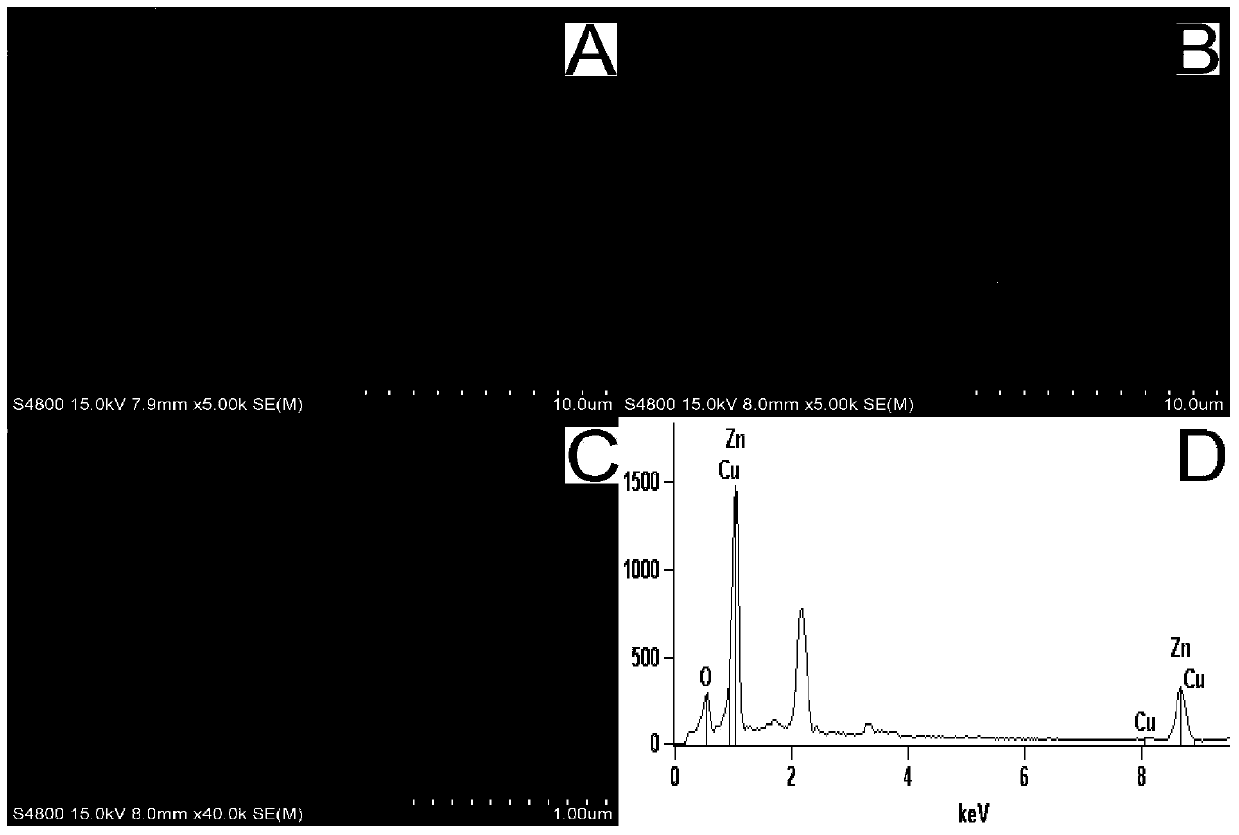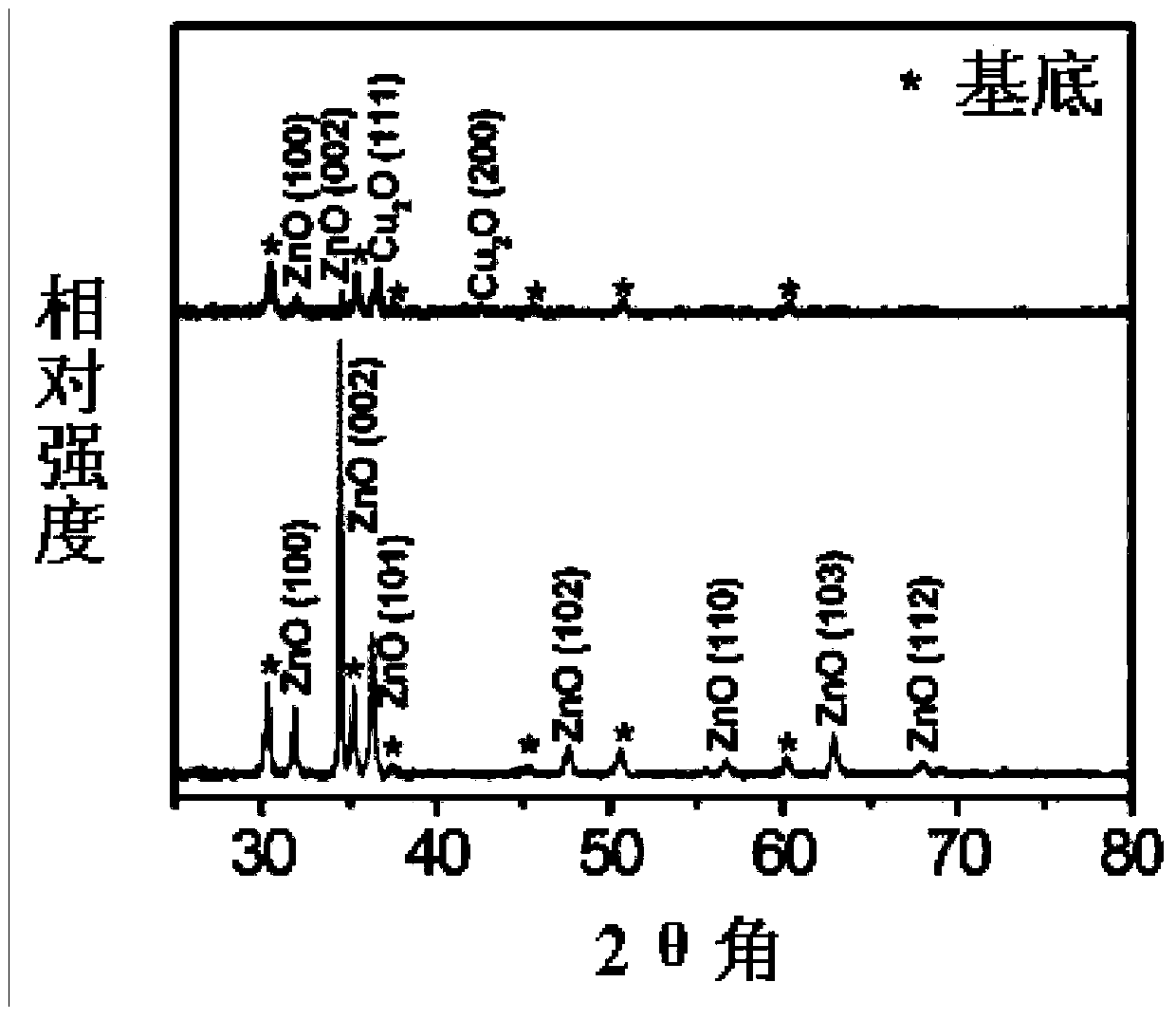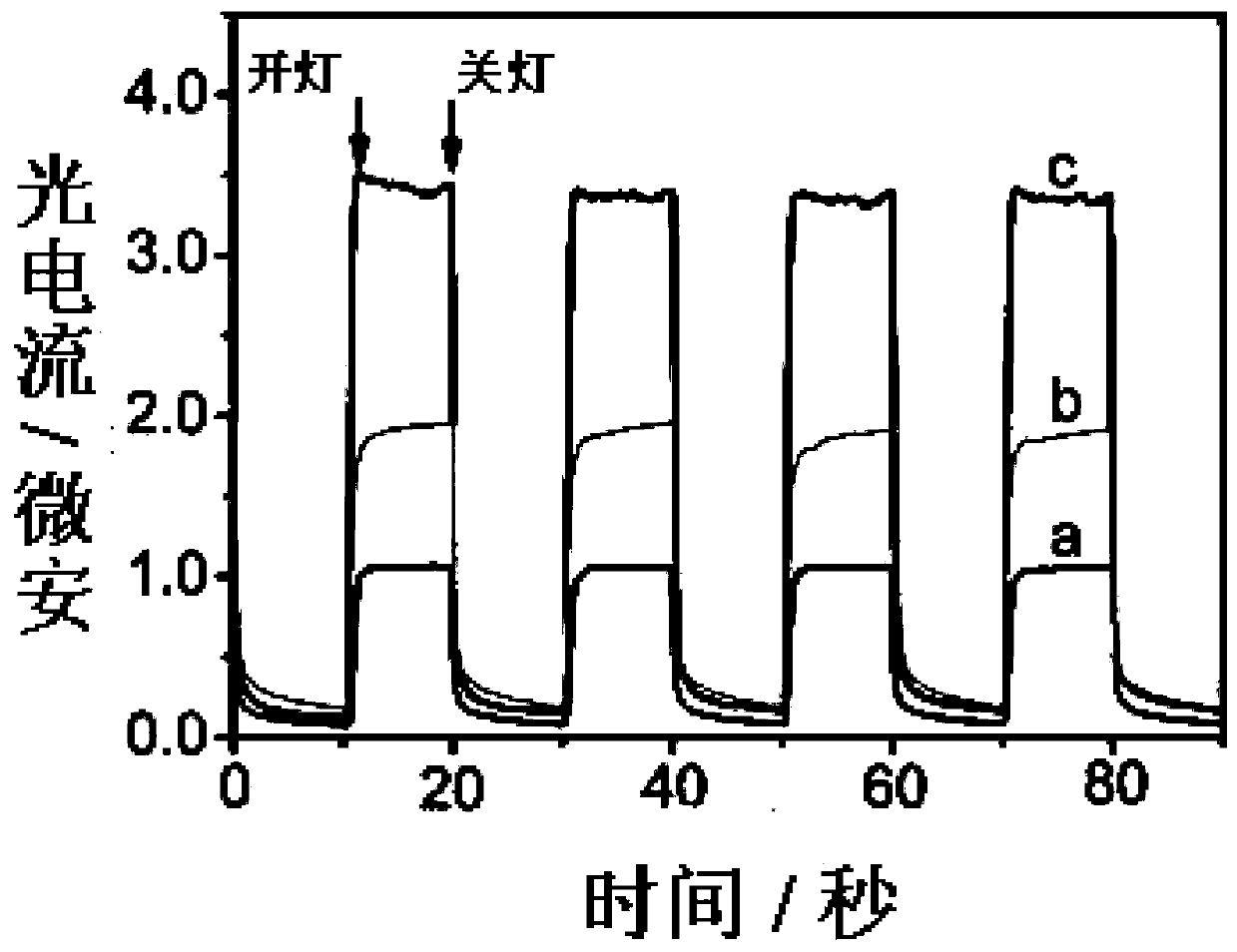Construction method of photoelectric chemical sensor for detection of reduced glutathione
A glutathione and photoelectrochemical technology, which is applied in the field of photoelectrochemical sensor construction, can solve problems affecting photoelectrochemical detection sensitivity, and achieve the effects of improving detection sensitivity, wide linear range, and low detection limit
- Summary
- Abstract
- Description
- Claims
- Application Information
AI Technical Summary
Problems solved by technology
Method used
Image
Examples
Embodiment 1
[0017] Example 1: A method for constructing a photoelectrochemical sensor for the detection of reduced glutathione, comprising the steps of:
[0018] (1) The ITO conductive glass is 1 cm × 4 cm unit size, with 1 mol L -1 Ultrasonic cleaning with sodium hydroxide and 5% hydrogen peroxide for 30 minutes, followed by immersion washing and rinsing with ethanol, acetone and pure water, and drying in the air.
[0019] The ITO conductive glass was used as the working electrode, the silver / silver chloride was used as the reference electrode, and the platinum wire was used as the counter electrode, and the three electrodes were inserted into a solution containing 5 mmol L -1 Zn(NO 3 ) 2 · 6H 2 O solution was deposited at 80°C for 20 minutes, and the deposition potential was -1.0V. After the reaction, a layer of dense white substance nano-zinc oxide was formed on the surface of ITO conductive glass, forming a nano-zinc oxide photoanode. See figure 1 (A), X-ray diffraction patter...
Embodiment 2
[0024] Example 2: Construction method of photoelectrochemical sensor for the detection of reduced glutathione:
[0025] Firstly, a cuprous oxide / zinc oxide heterojunction was electrosynthesized using the three-electrode system of an electrochemical workstation. -1 Ultrasonic cleaning with sodium hydroxide and 5% hydrogen peroxide for 30 minutes, followed by immersion washing and rinsing with ethanol, acetone and pure water, and drying in the air. ITO conductive glass was used as the working electrode (Φ 5.0), silver / silver chloride was used as the reference electrode, and platinum wire was used as the counter electrode. Insert the three electrodes containing 5 mmol L -1 Zn(NO 3 ) 2 · 6H 2 The O solution was deposited at 70 °C for 20 min with a deposition potential of −1.1 V. After the reaction, it was found that a layer of dense white substance was formed on the surface of ITO, which was characterized as nano-zinc oxide. The mother liquor on the surface of the nano-zi...
Embodiment 3
[0027] Example 3: Construction method of photoelectrochemical sensor for the detection of reduced glutathione:
[0028] Firstly, a cuprous oxide / zinc oxide heterojunction was electrosynthesized using the three-electrode system of an electrochemical workstation. -1 Ultrasonic cleaning with sodium hydroxide and 5% hydrogen peroxide for 30 minutes, followed by immersion washing and rinsing with ethanol, acetone and pure water, and drying in the air. ITO conductive glass was used as the working electrode (Φ 5.0), silver / silver chloride was used as the reference electrode, and platinum wire was used as the counter electrode. Insert the three electrodes containing 5 mmol L -1 Zn(NO 3 ) 2 · 6H 2 The O solution was deposited at 60 °C for 40 min with a deposition potential of −0.9 V. After the reaction, it was found that a layer of dense white substance was formed on the surface of ITO, which was characterized as nano-zinc oxide. The mother liquor on the surface of the nano-zi...
PUM
 Login to View More
Login to View More Abstract
Description
Claims
Application Information
 Login to View More
Login to View More - R&D
- Intellectual Property
- Life Sciences
- Materials
- Tech Scout
- Unparalleled Data Quality
- Higher Quality Content
- 60% Fewer Hallucinations
Browse by: Latest US Patents, China's latest patents, Technical Efficacy Thesaurus, Application Domain, Technology Topic, Popular Technical Reports.
© 2025 PatSnap. All rights reserved.Legal|Privacy policy|Modern Slavery Act Transparency Statement|Sitemap|About US| Contact US: help@patsnap.com



